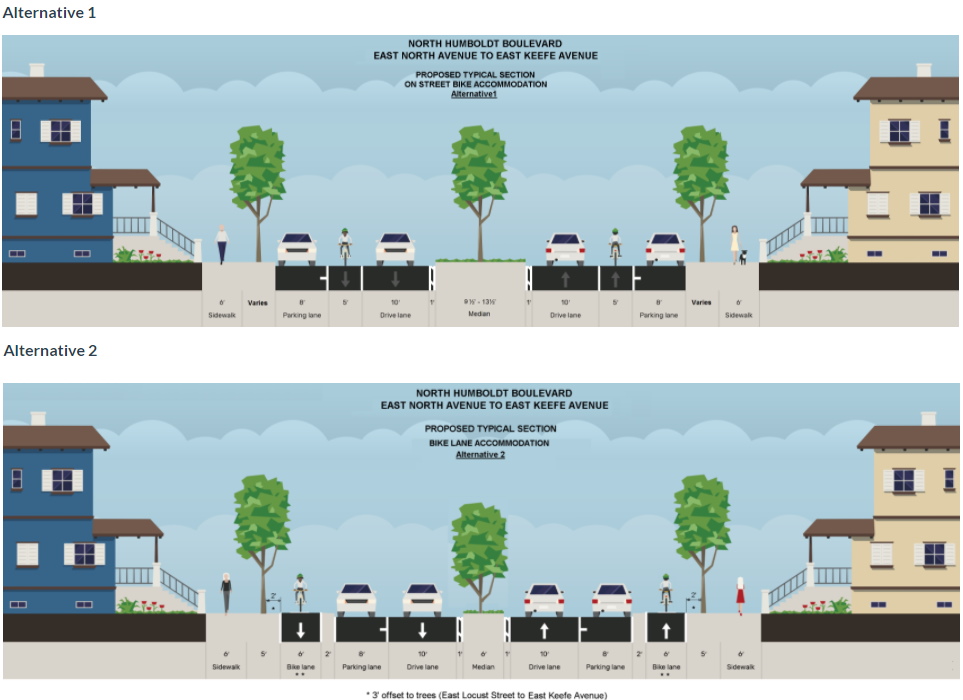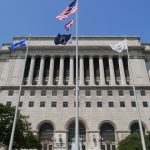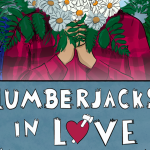Trees, Transit Thwart Riverwest Bike Lanes Plan
Humboldt Boulevard won't get protected bike lane because it would kill too many trees.
A proposal from the Department of Public Works (DPW) and Alderman Nik Kovac will add pedestrian-friendly upgrades to N. Humboldt Blvd. in Riverwest, but it won’t include a protected bicycle lane.
The city has been working since 2017 on a plan to entirely reconstruct the tree-lined boulevard from E. North Ave. to E. Keefe Ave. But the trees themselves have become a vexing issue.
The city, guided in part by its 2018 Complete Streets policy to protect all road users, prepared two design options. Alternative 1 more closely reflects the status quo, a single driving lane in each direction, a median up to 13 feet in width, a parking lane, and a striped bike lane. Alternative 2 includes a driving lane, six-foot-wide median and a parking lane, but adds a six-foot-wide protected bike lane to the inside of each parking lane. Both proposals include left-turn lanes as well as curb bump-outs to shorten pedestrian crossings and deter high-risk passing.
Alternative 1 would require 69 trees to be removed. Alternative 2 would require 212 trees to be removed, including all 131 in the median. Forestry services manager Randy Krause said the oldest of the trees are 70 years old.
“There is a certain amount of right of way we have to work with,” said DPW Commissioner Jeff Polenske. “We would have preferred to come up with a way to provide for a protected bike lane or protected bike facility.”
But trees aren’t the only issue.
“We received some significant feedback from [the Milwaukee County Transit System],” said Polenske. “A huge concern with being able to provide public transit on Humboldt Boulevard.” He said there were concerns about the ability of the buses to operate in narrow lanes.
On N. Humboldt Ave. south of E. North Ave., MCTS Route 14 buses often have to pause in an available parking space when another bus is encountered in a section that doesn’t have a median. Polenske said MCTS has abandoned its use of W. Wells St. through Marquette’s campus where a median is present because the lanes are too narrow.
“We thought we had an alternative we could advance, but unfortunately the impacts are what we presented here tonight,” said Polenske. He said the challenges were both to accommodate MCTS and the trees.
The $8.6 million project includes a full rebuild of the roadway, curbs, ramps, drains and other street infrastructure. Federal funds would cover 80% of the project costs, with the city left to come up with approximately $1.72 million. Most of the construction is expected to occur in 2022, with the project completed in 2023.
A number of residents expressed their disappointment with the decision to drop the protected bicycle lane.
“A lot of them are dying or are already dead,” said Jacob Marek, a former aldermanic challenger, of the trees. “You are going to sacrifice 80 years of cyclist accidents for 212 trees?”
Kevin Bereswill, a corridor resident, said he favored eliminating parking where possible to accommodate the protected bike lane. “We don’t need the parking anymore,” he said, citing examples elsewhere in the city where it had been eliminated.
“The main obstacle is we probably would have lost even more trees,” said Kovac in giving a list of reasons the city didn’t fully model out the no-parking scenario. He said combining the bike lanes on one side would have required removing an entire side of trees.
Kovac noted that the full right of way extends beyond the sidewalk and into what people perceive as their yards. “I don’t think anyone had a real appetite to pave over people’s front yards and put in cycle infrastructure there,” said the alderman.
The alderman said the number of trees that would be lost effectively made the decision on what alternative to pursue. But he said he expected better cycling infrastructure elsewhere in his district.
“Expect big changes on Van Buren,” said Kovac of N. Van Buren St. through the Lower East Side. The street there provides two lanes in each direction, which he said was too many. “Don’t give up on us even though we couldn’t figure it out on this one.”
Some area residents, including Yves LaPierre and RoseMary Oliveira, said they biked in the corridor but wanted the trees to stay. Oliveira, who owns three properties on the street, said she understands the trees improve property values.
Properties along N. Humboldt Blvd. will get one upgrade that most people will never see: new water service lines. Most of the houses along the street have lead service lines. They would be replaced with copper piping.
The DPW project website contains more information on the project.
If you think stories like this are important, become a member of Urban Milwaukee and help support real, independent journalism. Plus you get some cool added benefits.
Political Contributions Tracker
Displaying political contributions between people mentioned in this story. Learn more.
- February 11, 2016 - Nik Kovac received $50 from Jeff Polenske
Transportation
-
MCTS Adds 28 New Buses
 Jul 13th, 2024 by Graham Kilmer
Jul 13th, 2024 by Graham Kilmer
-
MCTS Designing New Bus Shelters
 Jul 10th, 2024 by Graham Kilmer
Jul 10th, 2024 by Graham Kilmer
-
MCTS Updates RNC Bus Detours To Better Serve Downtown, Riders
 Jul 9th, 2024 by Jeramey Jannene
Jul 9th, 2024 by Jeramey Jannene






















Why are we spending so much time and energy on a dedicated bike lane on Humboldt Avenue with the Beer Line bike path just a couple of blocks west? What about the bike boulevard that the city started to implement last year? Would it not make more sense to coordinate these initiatives?
Good point about Rt 14 south of Water … MCTS still runs that, so how does the median itself change things on this stretch?
Regardless, their input was probably minor compared to the trees
@mkwagner, I believe most of the energy for protected bike lanes was to set a precedent instead of more status quo paint
I eagerly await the public meeting on fixing the Van Buren freeway — plenty of ROW width in that corridor to do something substantial